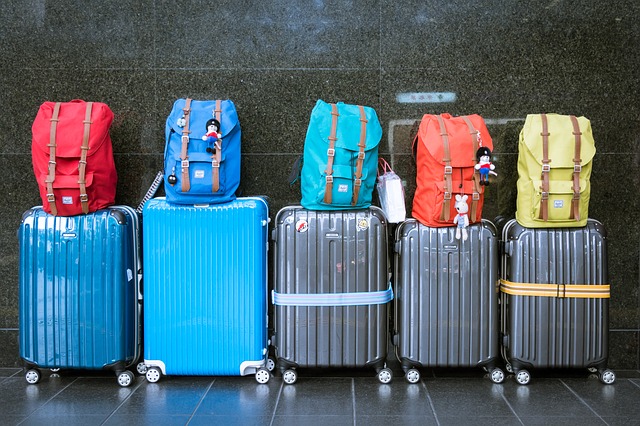The Logistics of Robot Travel

You want a robot to meet and greet your guests, address them individually, make them laugh with a thoughtful, witty speech and give them a memory that will last a lifetime. Logistics is a key part of the puzzle.
The spontaneity everyone loves to see in our robots is an illusion that requires careful planning. Get it right and the results are spectacular.
This essential logistics checklist contains vital information that you can use to ensure your robot event goes with a Wow!
- Timescales
The simple, rather predictable rule is the further the robot must travel, the more time needed to get him there. While this first point may seem obvious, it can take longer than you think.
So the first point on your checklist is making sure you have left yourself enough time.
If the event is in the UK, we bring the robot ourselves in our own truck. We’re centrally based so the usual 9am event start is usually easily managed.
For international events, things get more complicated. Boris recently appeared at an event in Bulgaria. We had to ship him two weeks before the event date to ensure he cleared customs via all the necessary cargo checks.
If there are national holidays during the delivery period, these must also be factored in. An event in Spain was made more complicated by a national holiday that effectively shut down the delivery service for days.
- What do you want the robot to do?
Setting realistic expectations is critical. Our robots are professional entertainers but they don’t tap dance or juggle. (Not yet, anyway!)
They can say whatever you want them to and programmed to appear as if they react to people. Everything takes planning and scripts must be prepared.
For the best results, start planning your script as soon as possible and talk to us about anything you want the robots to do. We will keep it real and make your vision possible in every way we can.
- Robots might seem human but they are not
While robots do fly on planes, they don’t get to sit in the cabin. They also don’t simply get boxed up and posted. Robots are complex equipment and require specific manifests to clear customs.
Our robots are classified in accordance with the rules of the customs office at their shipping destination.
All our robots come with at least one human handler. Our shipping company collects the robot and transports him to the airport with all his necessary paper work.
At the destination airport, the robot will be offloaded and checked by local customs officers. This can be anything from days to weeks.
Finally, another courier will transport the robot to the event venue, shortly before our handlers arrive to take over.
- Why our robots need a human handler
Our robots are complex, sophisticated humanoids created by Engineered Arts, a cutting edge creative invention company in Cornwall, UK.
They are designed to entertain and delight people with their personality quirks and cheeky humour. However, as with any complicated equipment, things can go wrong.
Our robots travel in pieces and, for someone who hasn’t received training, it’s very easy to put those pieces together in the wrong order.
While our robots aren’t particularly heavy once assembled, they need to be balanced on their bases carefully to avoid them toppling over.
Cables can be plugged into the wrong connectors, software can freeze or a firewall can prevent access to the data on the kiosk. Often, a simple reboot is all that’s needed. Knowing when and how to do this, is the tricky part.
Our policy is to offer a great value service and that means making sure you have a fully-functioning robot for the duration of your event. That means having an expert roboteer alongside the robot at all times.
- Luggage and weight
Our robots travel in a total of four packages: three flight cases plus the air compressor that enables them to move. The robot’s torso travels in one case, its legs and base in the second and its kiosk in the third.
The robot alone weighs around 30KGs. The complete load, including cabling, base and all the satellite parts necessary to keep him up and running is substantially more than that.
The kiosk is an 80cm square box that is the nerve centre of the robot. Your script will be uploaded to the kiosk via hardwire connection prior to shipping, which could mean weeks before arrival.
- Paperwork
Robot passports, just like human passports, need to be up-to-date and fully compliant with the Customs office of the robot’s destination.
Wherever possible a Carnet is used to smooth the passage for the robot to its destination.
This international, temporary document allows the robot to pass easily between countries with minimal legislation at point of entry and exit.
- Insurance
Our insurance covers every aspect of getting a robot from us to your venue and back again.
- Rehearsal time
Congratulations! The robot has arrived at the event venue, with the script uploaded. The handler should have received a floorplan of the venue and know about power, cabling and internet positioning.
Rehearsing at the venue can mean anything from a quick run-through of pre-programmed material to a whole day’s stage and sound check. It all depends on the complexity of the robot’s part in the event.
Ideally, we receive the script with 10 working days to spare prior to shipping. This allows us to upload the script, film the robot’s performance, return the footage to the client and make any changes before the robot leaves our premises.





